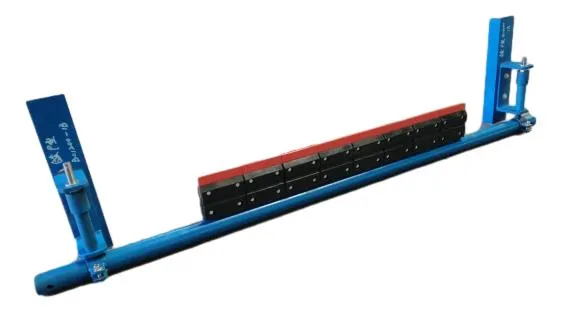 Afrikaans
Afrikaans  Albanian
Albanian  Amharic
Amharic  Arabic
Arabic  Armenian
Armenian  Azerbaijani
Azerbaijani  Basque
Basque  Belarusian
Belarusian  Bengali
Bengali  Bosnian
Bosnian  Bulgarian
Bulgarian  Catalan
Catalan  Cebuano
Cebuano  Corsican
Corsican  Croatian
Croatian  Czech
Czech  Danish
Danish  Dutch
Dutch  English
English  Esperanto
Esperanto  Estonian
Estonian  Finnish
Finnish  French
French  Frisian
Frisian  Galician
Galician  Georgian
Georgian  German
German  Greek
Greek  Gujarati
Gujarati  Haitian Creole
Haitian Creole  hausa
hausa  hawaiian
hawaiian  Hebrew
Hebrew  Hindi
Hindi  Miao
Miao  Hungarian
Hungarian  Icelandic
Icelandic  igbo
igbo  Indonesian
Indonesian  irish
irish  Italian
Italian  Japanese
Japanese  Javanese
Javanese  Kannada
Kannada  kazakh
kazakh  Khmer
Khmer  Rwandese
Rwandese  Korean
Korean  Kurdish
Kurdish  Kyrgyz
Kyrgyz  Lao
Lao  Latin
Latin  Latvian
Latvian  Lithuanian
Lithuanian  Luxembourgish
Luxembourgish  Macedonian
Macedonian  Malgashi
Malgashi  Malay
Malay  Malayalam
Malayalam  Maltese
Maltese  Maori
Maori  Marathi
Marathi  Mongolian
Mongolian  Myanmar
Myanmar  Nepali
Nepali  Norwegian
Norwegian  Norwegian
Norwegian  Occitan
Occitan  Pashto
Pashto  Persian
Persian  Polish
Polish  Portuguese
Portuguese  Punjabi
Punjabi  Romanian
Romanian  Russian
Russian  Samoan
Samoan  Scottish Gaelic
Scottish Gaelic  Serbian
Serbian  Sesotho
Sesotho  Shona
Shona  Sindhi
Sindhi  Sinhala
Sinhala  Slovak
Slovak  Slovenian
Slovenian  Somali
Somali  Spanish
Spanish  Sundanese
Sundanese  Swahili
Swahili  Swedish
Swedish  Tagalog
Tagalog  Tajik
Tajik  Tamil
Tamil  Tatar
Tatar  Telugu
Telugu  Thai
Thai  Turkish
Turkish  Turkmen
Turkmen  Ukrainian
Ukrainian  Urdu
Urdu  Uighur
Uighur  Uzbek
Uzbek  Vietnamese
Vietnamese  Welsh
Welsh  Bantu
Bantu  Yiddish
Yiddish  Yoruba
Yoruba  Zulu
Zulu impact roller for belt conveyor
The Impact of Impact Rollers on Belt Conveyors
Belt conveyors are essential components in many industries, serving as a critical link in the transportation of materials. The efficiency of these systems largely depends on their design and the components used within them. Among these components, impact rollers play a vital role in enhancing the performance and longevity of belt conveyors. This article explores the significance of impact rollers, their functionality, and their impact on the overall efficiency of belt conveyors.
What are Impact Rollers?
Impact rollers are specialized rollers placed at strategic points along a conveyor belt system, particularly in areas where materials are loaded onto the belt or where heavy load drops occur. Unlike standard rollers that merely support the belt, impact rollers are designed to absorb the shock and impact of heavy materials that are dropped onto the conveyor. By doing so, they protect the conveyor belt and other components from damage, extending their operational life and reducing maintenance costs.
Functionality of Impact Rollers
The primary function of impact rollers is to cushion the impact force generated by falling materials. When materials are loaded onto the belt from a height, they can create significant downward pressure, potentially leading to belt deformation, tears, and premature wear. Impact rollers mitigate these effects by distributing the load across a larger surface area and reducing localized stress.
Impact rollers are typically made of robust materials, such as rubber or plastic, designed to absorb and dissipate energy during impact. Furthermore, the design of these rollers often includes features like a larger diameter and enhanced bearing systems, allowing them to withstand greater loads and provide smoother motion. This not only protects the conveyor belt but also maintains a more consistent material flow.
Benefits of Using Impact Rollers
impact roller for belt conveyor

1. Extended Equipment Lifespan By reducing the impact forces that the conveyor belt experiences, impact rollers help prolong the life of both the belt and the roller assembly. This results in lower replacement frequency and reduced operational downtime, which is crucial for maintaining productivity.
2. Lower Maintenance Costs Frequent maintenance and repairs can significantly increase operating costs. The use of impact rollers decreases wear and tear on the conveyor system, leading to fewer breakdowns and less need for replacement parts.
3. Improved Material Handling Impact rollers provide a more stable platform for materials during loading. This stability can dramatically improve the efficiency of material handling processes, reducing spills and enhancing safety in the workplace.
4. Enhanced Performance By reducing damage to the conveyor belt, impact rollers contribute to smoother operation and improved throughput. A more efficient conveyor system can lead to increased productivity and a better return on investment.
5. Versatility Impact rollers are compatible with a wide range of conveyor systems and are suitable for use in various industries, from mining and quarrying to manufacturing and logistics. Their versatility makes them a valuable addition to many settings.
Conclusion
In conclusion, impact rollers are a critical component in the operational efficiency of belt conveyors. Their ability to absorb shock and reduce wear on conveyor belts leads to extended equipment life, lower maintenance costs, and enhanced material handling. In industries where reliable material transport is essential, integrating impact rollers into conveyor systems is not just beneficial but necessary for optimizing performance and ensuring the longevity of the equipment. As technology advances, the design and materials used in impact rollers may continue to evolve, further enhancing their effectiveness and value in industrial applications. Investing in high-quality impact rollers can provide significant long-term benefits, making them an essential consideration for any operation utilizing belt conveyors.
-
Revolutionizing Conveyor Reliability with Advanced Rubber Lagging PulleysNewsJul.22,2025
-
Powering Precision and Durability with Expert Manufacturers of Conveyor ComponentsNewsJul.22,2025
-
Optimizing Conveyor Systems with Advanced Conveyor AccessoriesNewsJul.22,2025
-
Maximize Conveyor Efficiency with Quality Conveyor Idler PulleysNewsJul.22,2025
-
Future-Proof Your Conveyor System with High-Performance Polyurethane RollerNewsJul.22,2025
-
Driving Efficiency Forward with Quality Idlers and RollersNewsJul.22,2025





























